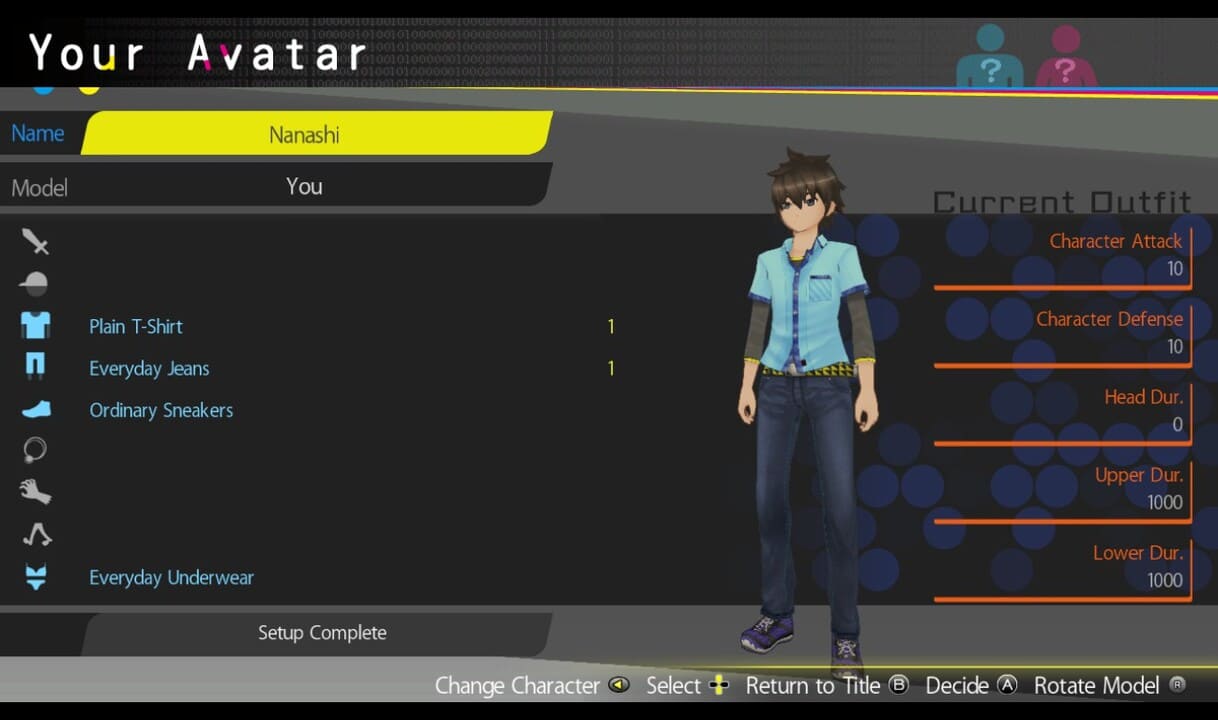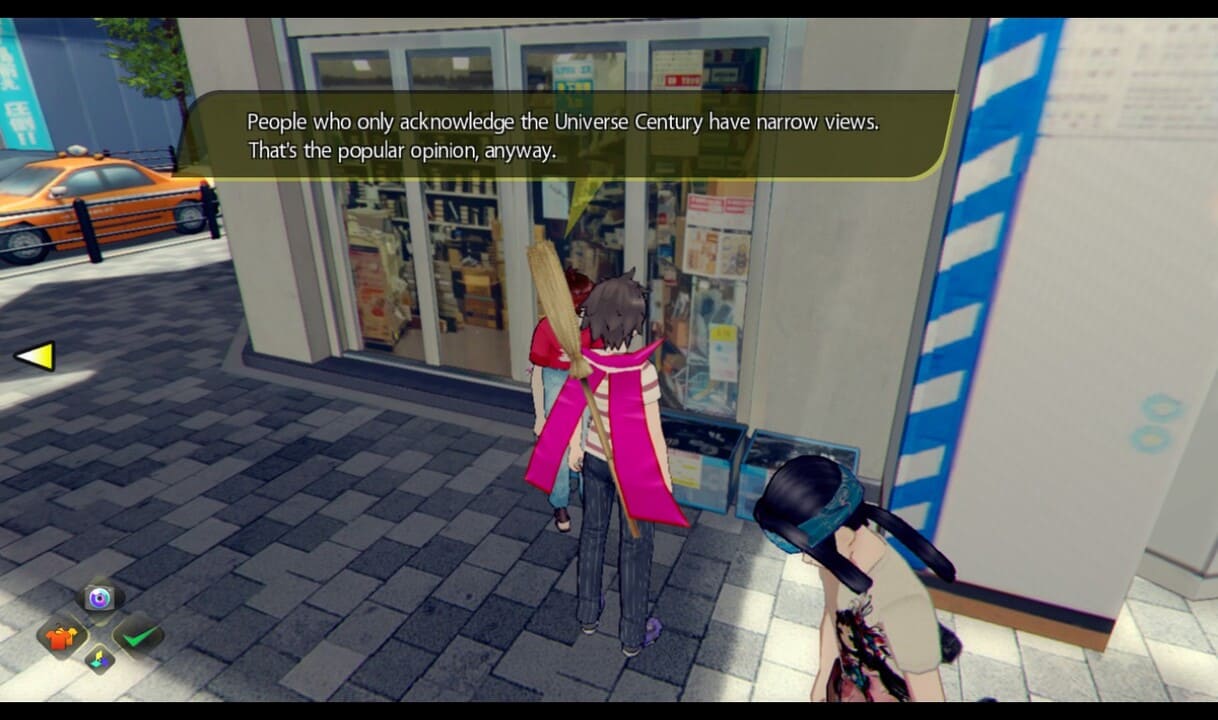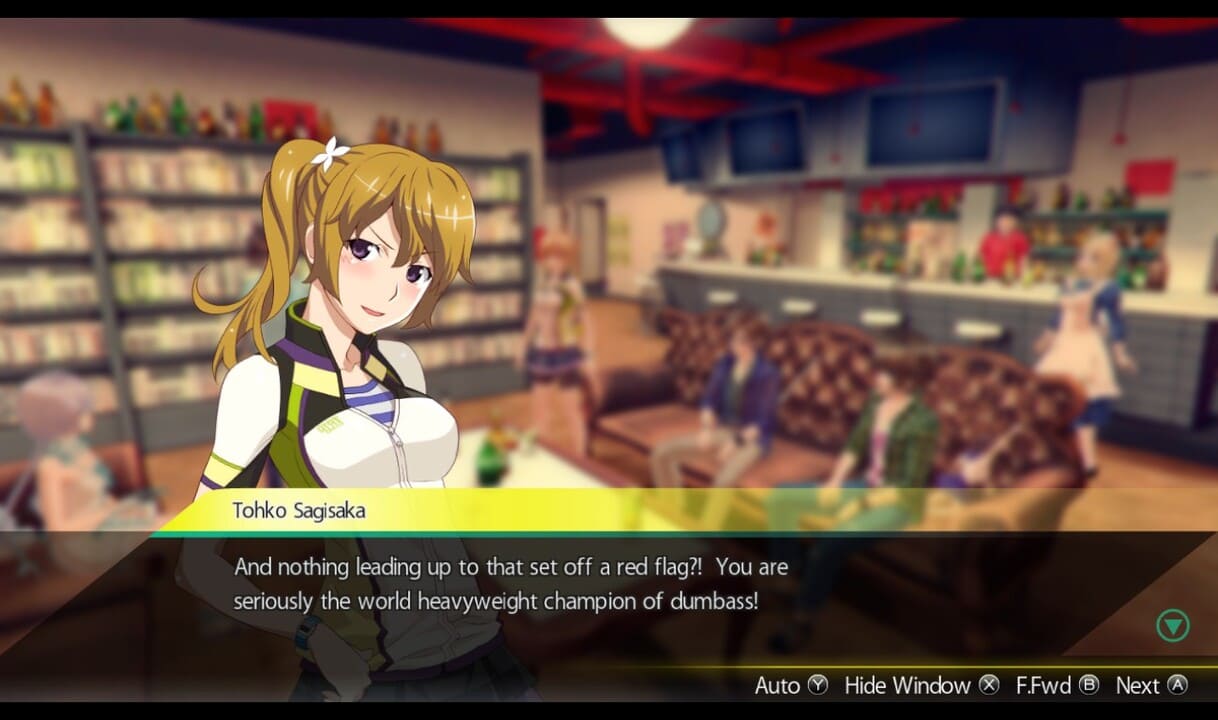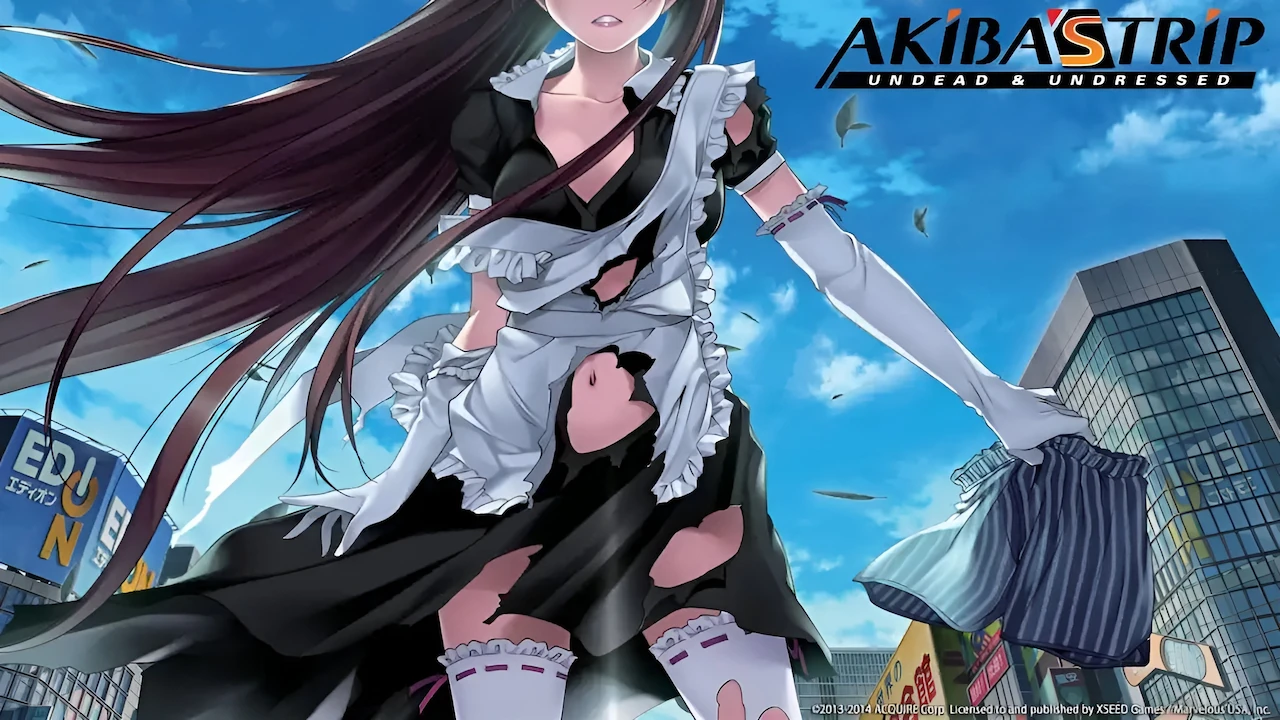| Title | Akiba’s Trip: Undead & Undressed |
| Released | Nov 7, 2013 (JP) Aug 12, 2014 (US) |
| Developer(s): | Acquire Corp. |
| Publisher(s): | XSEED Games |
| Platform(s): | |
| Genre | Beat ‘Em Up |
| Rating | M |
Completed on PC on Casual (Normal)
HowLongToBeat Time: 9hrs | My Clear Time: 7hrs
Background
Akiba’s Trip: Undead & Undressed (known as Akiba’s Trip 2 in Japan) was developed by Acquire and released in Japan in 2013. It was later localized for North America and Europe, arriving on PlayStation 3, PlayStation Vita, and PlayStation 4 in 2014, with subsequent releases on PC and Nintendo Switch. Set in a faithfully recreated Akihabara, the game blends RPG and beat-’em-up mechanics with an eccentric premise: fighting vampires (called “Synthisters”) by exposing them to sunlight—by stripping their clothing.
Localization brought unique challenges, as explained in an interview with XSEED’s Tom Lipschultz on PlayStation LifeStyle:
“I tell them it’s like a nerdy Japanese video game version of The Hangover. If you think about it, both Las Vegas and Akihabara are somewhat similar on a certain level. They’re both places that are world-famous for their indulgent nature—but while Vegas is all about sex, booze, and gambling, Akihabara is all about indulging in otaku fetishes without anyone judging you for it. And just as The Hangover is a scathing, over-the-top satire of Vegas culture that also celebrates the city’s unique identity, so too is Akiba’s Trip a scathing, over-the-top satire of Akiba culture that also celebrates its unique identity” (Teague, C. 2014).
Lipschultz also noted the hurdles of contextualizing dialogue for Western audiences during localization, which required extensive QA efforts:
“With an open-world-esque game like this, it’s important to see everything you possibly can in context, since the Japanese language is mostly devoid of pronouns, conjugations, and singular/plural distinctions” (Teague, C. 2014).
The game received mixed reviews upon release for its humor, unique concept, and open-world design, alongside criticism for repetitive combat and simplistic mechanics. It garnered a cult following for its quirky tone and detailed representation of Akihabara.
The development team for Akiba’s Trip: Undead & Undressed includes:
- Tomonori Imura (Director)
- Known for Akiba’s Trip: Undead & Undressed, Akiba’s Trip: Hellbound & Debriefed, Way of the Samurai 4
- Akio Watanabe (Character Designer)
- Known for Grisaia: Phantom Trigger, Bullet Soul, Suzumiya Haruhi no Gekid?
- Toshiko Tasaki (Composer)
- Known for Shin Megami Tensei: Digital Devil Saga, Shin Megami Tensei: Persona 2 – Innocent Sin (2011), Shin Megami Tensei: Devil Summoner
- Junichirow Tamura, Teruyuki Morooka (Producers)
- Junichirow known for Akiba’s Trip: Undead & Undressed, Akiba’s Beat, Xenosaga: Episode I – Der Wille zur Macht
- Teruyuki known for Akiba’s Trip: Undead & Undressed, Summon Night: Swordcraft Story 2, Magna Carta: Tears of Blood

The title screen invites players into Akihabara’s undead-infested urban playground.
Experience
Before playing the game, I looked the game up on PCGamingWiki and found a fan fix called AkibaInterceptor that fixes many issues from blurry resolution, preventing system sleeping while playing with a controller, mouse cursor visible while playing, to increasing the framerate to 60, and more. Additionally, the modded Steam controller configuration solves menu navigation being too fast on framerates above 30fps.

The save menu displays your progress, including that prized cleared save slot.
Having played titles like Yakuza, Persona 5, and other open-world games with heavy cultural influences, I approached Akiba’s Trip: Undead & Undressed with curiosity about its portrayal of Akihabara and its unconventional gameplay. While I had no prior experience with the series, its premise immediately caught my attention as a mix of humor, absurdity, and niche appeal.
Impressions
Introduction

Akihabara awaits with all its strange charm and challenges.
The game begins with your protagonist—a typical otaku—being lured into an experiment that turns him into a Synthister, a type of vampire that feeds on social energy rather than blood. Rescued by a mysterious girl, you join a group called the “Akiba Freedom Fighters” to protect Akihabara from Synthister threats.
The story leans heavily into campy dialogue, meta-humor, and self-awareness, creating a lighthearted tone that doesn’t take itself too seriously. The beginning hours set up the game’s mechanics and introduce Akihabara as the core setting, which is packed with detailed recreations of real-world shops and landmarks.
Gameplay and Mechanics
The core gameplay combines exploration, combat, and customization. You roam Akihabara, engage in missions, and fight Synthisters using an unusual combat system focused on targeting enemies’ clothing. Battles are fast-paced, allowing you to aim at head, torso, or leg garments to strip them off once they’re weakened.

Mastering head, upper, and lower hits is key to surviving Akihabara’s undead.
While the combat starts off amusing, it quickly becomes repetitive due to limited depth and simplistic AI. Missions vary from story objectives to humorous side quests, some of which embrace the game’s absurd humor—like retrieving obscure otaku merchandise or helping quirky NPCs.

Nanashi’s arsenal shines—until durability wears it down.
Customization is a highlight, offering a variety of outfits, weapons, and accessories to tweak your character’s appearance and stats by meeting your sister and combining multiple weapons, clothes together to create stronger versions of themselves. The RPG mechanics, while light, include leveling up and upgrading equipment, adding some progression to the experience.
Art & Audio

A quick chat about Gundam lore reminds us there’s more than one way to view the universe.
The visuals capture the essence of Akihabara, featuring a condensed but lively version of the iconic district. Shop signs, advertisements, and street layouts mirror real-world locations, immersing players in its otaku culture. However, the character models and animations feel a bit stiff, but it is understandable as it reflects the game’s modest budget.
On the audio side, the soundtrack stands out thanks to composer Toshiko Tasaki, known for her work on titles like Shin Megami Tensei: Devil Summoner and the Mario & Luigi series. The music adds energy and personality to the game, complementing its quirky tone. Notable tracks include “Akiba Freedom Fighters” and “Cold”, which enhance key moments and provide memorable themes
Unique Features and Mechanics

Nanashi’s signature move leaves enemies scrambling in more ways than one.
The game’s most distinctive feature is its “strip combat” mechanic, which is both its biggest draw and most divisive element. It’s undeniably unique but risks feeling like a gimmick after extended play. The faithful recreation of Akihabara is another highlight, with a level of detail that makes it a love letter to fans of otaku culture. The ability to interact with NPCs, visit real-life-inspired stores, and engage in quirky activities adds to the immersion.
Seiyuu Performances
The Japanese voice cast includes notable seiyuu like Hisako Kanemoto (Sailor Moon Crystal) and Chiwa Sait? (Madoka Magica), adding charm for fans of anime voice work.

Tohko Sagisaka doesn’t hold back in this brutally honest moment.
- Chiwa Saito
- Known for Tamamo from Fate, Homura Akemi from Madoka Magica, Metis from Persona 3
- Hisako Kanemoto
- Known for Sailor Mercury/ Ami Mizuno from Sailor Moon Crystal, Djeeta from Granblue Fantasy, Helena Blavatsky from Fate
- Eriko Nakamura
- Known for Dunya from Magi: The Kingdom of Magic, Harula Amami from Idolmaster, Beatrice from Freedom Wars
- Haruka Yamazaki
- Known for Herta from Honkai: Star Rail, Mitsuki Hokuto from Tokyo Xanadu, Aika Kiryu from High School DxD
- Aya Suzaki
- Known for Mika from Under-Night, Mako Mankanshoku from Kill la Kill, Madoka Tsukimiya from Gal*Gun
- Ryota Osaka
- Known for Chihiro Mayuzumi from Kuroko no Basuke, Sadao Maou from The Devil is a Part-Timer!!, Percival from Granblue Fantasy
Verdict
Akiba’s Trip: Undead & Undressed is a niche title that thrives on its absurdity and cultural charm. The game’s memorable soundtrack, featuring compositions by Toshiko Tasaki and memorable tracks like “Akiba Freedom Fighters” and “Cold,” adds an extra layer of enjoyment, perfectly complementing the lively recreation of Akihabara.
While the clunky and sometimes frustrating combat system, along with dated visuals, may deter some players, its humor, unique concept, and loving attention to detail make it a worthwhile experience for fans of otaku culture and unconventional games. It’s not without flaws, but it’s a fun, tongue-in-cheek adventure for those willing to embrace its quirks.
TLDR
Akiba’s Trip: Undead & Undressed (PC)
7
Decent
Summary: Akiba’s Trip: Undead & Undressed is a quirky RPG that embraces its absurd premise and otaku culture. Its faithful recreation of Akihabara and standout soundtrack by Toshiko Tasaki shine, while the clunky combat system and dated visuals hold it back.
Despite its flaws, the humor, unique mechanics, and charm make it a fun, niche adventure for those who appreciate its playful tone and cultural focus.
References
- Teague, C. (2014, August 5). Akiba’s Trip: Undead & Undressed Interview – Voice Work, Japan, & More. PlayStation LifeStyle. https://www.playstationlifestyle.net/2014/08/05/akibas-trip-interview-challenges-otakus-and-more/
- VideoGamerRob. (2015, May 26). AKIBA’S TRIP: Undead & Undressed — PC Launch Trailer. YouTube.
- Tasaki, T. (2019, August 7). Akiba’s Trip Undead & Undressed OST – Akiba Freedom Fighters. YouTube.
- Tasaki, T. (2022, October 3). Cold – AKIBA’S TRIP: Undead & Undressed OST | Toshiko Tasaki. YouTube.



Leave a Reply